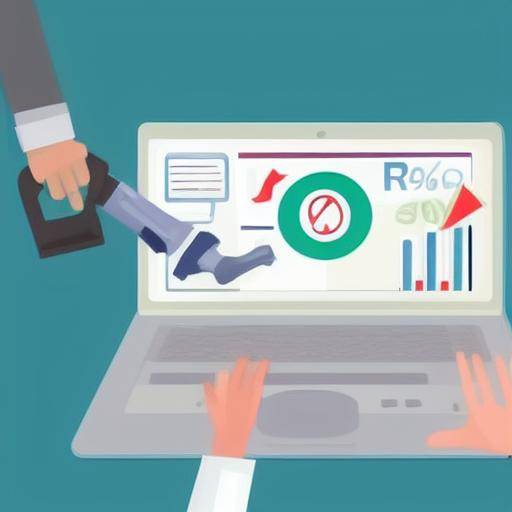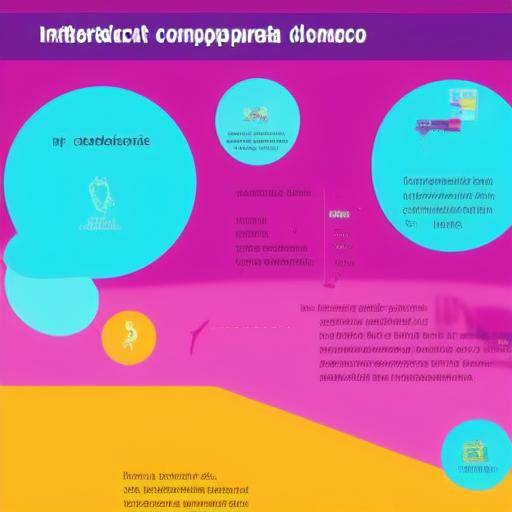
Quick loans have become a popular option for those who need liquidity immediately. However, it is essential to understand the impact of interest on these loans to make informed financial decisions. In this article, we will explore in detail the cost, accumulation and payment of interest in fast loans, providing a comprehensive view of their impact on personal finances. We will discover how to handle these factors effectively and make financial decisions that align with our long-term goals.
Introduction
Quick loans have gained popularity in recent years as a convenient way to get funds quickly. However, the cost associated with these loans can be significantly higher than that of other forms of financing. In this article, we will explore the impact of interest on fast loans, focusing on the cost it implies for borrowers, the accumulation of interest over time and effective strategies to manage payment.
History and Background
Origins of the Quick Loans
Quick loans are rooted in the need for immediate access to funds by consumers. Originally, these loans were mainly provided through traditional retail lenders, with limited options for those who needed rapid funding. With the advent of the Internet and the digitization of financial services, new opportunities emerged to access loans quickly and conveniently.
Evolution and Trends
As quick loans have become more accessible through online platforms, they have become a common option for individuals seeking immediate solutions to their financial needs. The evolution of this market has been significant, with a proliferation of suppliers offering a wide range of products and terms to attract consumers.
Over the past decade, rapid loans have experienced rapid growth, driven by demand for agile funding and increased competition among suppliers. However, this growth has led to increased regulatory scrutiny and discussions on how to protect borrowers from falling into unsustainable debt cycles.
Impact on Consumers
Improved access to quick loans has provided consumers with greater flexibility and convenience in managing their finances. However, rapid access to funds has also led to concerns about over-indebtedness and the inability of borrowers to meet the costs associated with these loans.
The accumulation of interest in quick loans can result in a significant financial burden for borrowers, especially those who do not fully understand the terms and conditions of their financing. The lack of financial education and the urgency of obtaining funds often cause consumers not to adequately consider the long-term impact of the interests associated with rapid loans.
Detailed Analysis
Cost of Quick Loans
The cost of quick loans is mainly composed of the interest accumulated during the financing period. These interests are often considerably higher than those offered by traditional financial institutions, which may result in a significant financial burden on borrowers.
Loan lenders who offer quick loans often justify high interests as compensation for the greatest risk they take when lending individuals with little or no credit check. However, for borrowers, this means the need to understand the actual cost of the loan, including accumulated interest, to make informed financial decisions.
Accumulation of Interests to Long Time
The accumulation of interest over time is one of the most critical aspects to consider when assessing the feasibility of quick loans. As interest accumulates, the total cost of the loan can dramatically increase, potentially triggering a cycle of indebtedness that is difficult to overcome.
It is crucial for borrowers to understand how they calculate and accumulate interest in their quick loans. In addition, it is important to consider the impact of different terms and conditions, such as the frequency of interest capitalization, which can significantly influence the total amount paid over time.
Effective Payment Strategies
Effectively managing the payment of quick loans is critical to mitigating the financial impact of interest. The borrowers must develop a payment plan that allows them to settle their debt in a timely manner and avoid excessive accumulation of interest. This may include the allocation of additional funds to monthly payments or consideration of refinancing options to reduce the financial burden.
In addition, financial education plays a crucial role in the ability of borrowers to understand and negotiate favourable terms with lenders. Being aware of the rights and responsibilities associated with quick loans is essential to making informed decisions and avoiding harmful financial consequences.
Comparative analysis
Cost, Accumulation and Payment Comparison
Comparison of costs associated with quick loans, accumulation of interest over time and effective payment strategies can help borrowers to accurately assess the financial viability of these options. By understanding how these elements interact with each other, consumers can make informed decisions that align with their long-term financial goals.
It is important to note that the comparison of these variables should take into account specific aspects of each loan, such as interest rate, loan duration and payment conditions. The consideration of these factors together provides a more complete picture of the financial impact of fast loans.
Practical Tips and Recommendations
Financial education
Financial education plays a key role in consumer capacity to effectively understand and manage fast loans. Finding educational resources related to debt management, interest calculation and best payment practices can empower borrowers to make informed financial decisions and avoid unwanted consequences.
Alternative Assessment
Before committing to a quick loan, it is recommended that borrowers carefully evaluate available alternatives. This may include consideration of other forms of financing, such as traditional personal loans or credit lines, which may offer more favorable terms and conditions in terms of total interest and costs.
Payment Planning
Developing a solid payment plan is key to effectively managing fast loans. This may involve the creation of a detailed budget that allows for allocation of additional funds to pay the debt in a timely manner. In addition, considering debt refinancing or consolidation strategies can help reduce the financial burden and simplify the management of payments.
Industry Perspectives and Expert Reviews
Implications for the Financial Industry
The impact of interest on fast loans has generated a significant debate within the financial industry. While some advocate the need to offer agile financing options for consumers, others warn about the risks associated with the accumulation of interests and the potential exploitation of financially vulnerable individuals.
The regulation and supervision of quick loans has been a focus for financial regulators, with measures aimed at protecting consumers from predatory practices and ensuring transparency in the provision of financial services.
PerspectivesFutures and Trends
The future of fast loans is closely linked to the evolution of financial regulations and the changing demands of consumers. Technological advances and digitalization are expected to continue to transform the way finance is accessed and managed, which could influence how quick loans are structured and offered in the future.
Developments in artificial intelligence, data analysis and financial technologies can provide opportunities to optimize risk assessment, improve transparency and provide more personalized experiences for borrowers. At the same time, regulation and supervision of this market are likely to remain an issue of interest, with an approach to protecting consumers and promoting responsible financial practices.
Conclusions
In short, the impact of interest on quick loans is a fundamental aspect to consider when evaluating financing options. Understanding the real cost of the loan, the accumulation of interest over time and effective payment strategies is vital for making informed financial decisions and avoiding unsustainable debt cycles. Financial education, careful evaluation of alternatives and payment planning are key elements that can help borrowers effectively manage fast loans and minimize their long-term financial impact.
FAQs
What are the alternative financing options for quick loans?
There are several alternatives to fast loans, such as traditional personal loans, credit lines, credit unions and asset-based financing options. Each has its own conditions and requirements, so it is important to compare and evaluate carefully before making a decision.
What measures can be taken to avoid excessive accumulation of interest in quick loans?
Effective payment planning is essential to avoid excessive accumulation of interest in quick loans. This may include the allocation of additional funds for advance payments, the use of debt refinancing or consolidation strategies, and the evaluation of payment options that reduce the long-term financial burden.
How can I calculate the total cost of a quick loan, including accumulated interest?
The total cost of a quick loan can be calculated by considering the interest rate, the loan period and the interest capitalization periodicity. There are online tools and financial calculators that can help estimate the total cost, allowing borrowers to compare different offers and make informed decisions.
Why is it important to understand the terms and conditions of quick loans?
Understanding the terms and conditions of fast loans is crucial to avoiding unpleasant surprises and making informed financial decisions. The terms of the contract, including interest, deadlines, fees and penalties, may have a significant impact on the total cost of the loan and the ability of the borrower to effectively manage the debt.
What is the role of regulation in the fast loan industry?
Regulation plays a crucial role in the protection of consumers and the promotion of responsible financial practices in the fast loan industry. Regulatory measures may include transparent disclosure requirements, limits to interest rates and supervision of fair business practices to prevent the exploitation of consumers.
How can I avoid falling into a debt cycle with quick loans?
Avoiding falling into a fast loan debt cycle requires careful financial management and a clear understanding of the terms and conditions of the loan. Develop a realistic payment plan, avoid successive loans to cover previous payments and seek financial advice if necessary are important steps to avoid falling into an unsustainable debt cycle.
In conclusion, understanding the impact of interest on quick loans is critical to making informed financial decisions and avoiding long-term adverse consequences. In assessing the cost, accumulation and payment of interest, borrowers can effectively manage their finances and minimize the financial impact of these financial products. Financial education, effective payment planning and careful evaluation of alternatives are essential elements for responsibly navigating the rapid loan landscape.
With this article, we hope to provide a comprehensive and practical view on the subject. For additional information, consulting a financial advisor and exploring alternative financing options can be of great help to those seeking to make informed and responsible financial decisions.




























